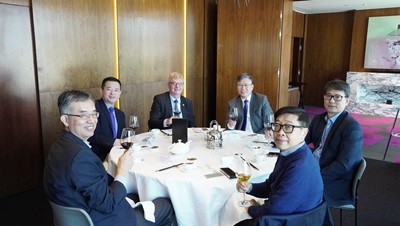One thing about interdisciplinary research and collaboration is that they can be very effective but also counterproductive. In terms of research funding, the world seems to be moving more towards funding bigger projects that enable and promote interdisciplinarity and collaboration between institutions. There is a perception, whether this is true or not, that a funding bid may be more likely to be supported if it involves universities from certain countries that are considered to be disadvantaged. Therefore, we have to be very mindful of the possible effects. Such politically-motivated collaborations may reduce standards, or, at least limit the contribution, and therefore impact, of individual universities in big collaborative projects. So, it is either collaboration or competition, and a little bit of overlap between the two.
I think COVID-19 and other unprecedented challenges the world is facing such as the energy crisis, global warming, an ageing population and reduced mobility during the pandemic, etc., have really taught us that things can change and that, actually, we can all work together to change for the better. It will be young people who solve these and future problems. Young people are our future, so we need to make it as easy as possible for them to do well and address these problems head-on. Higher education has a fundamental role to play in this, and we have to step-up collectively and start working together to make it happen.
We need more collaboration, partnerships and cross-departmental/institutional initiatives. How does this affect the various aspects of university management when it comes to resource governance and engagement?
This is a difficult and challenging topic. Resources for global universities are generally not increasing, and yet the pressures on global universities and the responsibilities they have to take-on are. We are living in a world with a cost-of-living and energy crisis with valuable resources being directed simply to enable people to survive. What implications does this have for resource budgets? Well, I think it is inevitable they are going to decrease. So, universities are being, and will continue to be, asked to do more with less. We have to be very innovative in how we address these issues. We need to develop an ecosystem that enables innovation.
Innovation can foster more cross-sector projects and forge closer partnerships between the university and industry to tackle major planetary issues. What are some challenges faced by higher education in this regard?
 There are issues related to the academia–industry divide as well. In academia, there is the “technology push”: universities will invest resources in pioneering research and inventions, which are clear academic drivers (academics like solving difficult problems). In industry, there is the “market pull”: capitalists see opportunities to make money if they have certain devices, expertise and technologies, many of which are developed or provided by academics. Also, academia tends to be “people-based” since individuals are employed for their creativity, while industry tends to be “project-based” since companies have to make money and gravitate naturally to where the projects are. Here, we can see a divide between the two sectors. We need to develop effective ways of making sure that universities and industry collaborate. This can be seconding industry representatives into academia so that they can explore opportunities to place academics in industry, or by letting academics work in industry for a period of time to understand the real pressures there.
There are issues related to the academia–industry divide as well. In academia, there is the “technology push”: universities will invest resources in pioneering research and inventions, which are clear academic drivers (academics like solving difficult problems). In industry, there is the “market pull”: capitalists see opportunities to make money if they have certain devices, expertise and technologies, many of which are developed or provided by academics. Also, academia tends to be “people-based” since individuals are employed for their creativity, while industry tends to be “project-based” since companies have to make money and gravitate naturally to where the projects are. Here, we can see a divide between the two sectors. We need to develop effective ways of making sure that universities and industry collaborate. This can be seconding industry representatives into academia so that they can explore opportunities to place academics in industry, or by letting academics work in industry for a period of time to understand the real pressures there.
An East–West divide also seems to emerge, albeit generally, in higher education research. In the East, research development takes a “top-down” approach, so policies and agendas influence the kinds of research to be conducted and funded. In the West, research development is more likely to take a “bottom-up” approach, so new ideas and projects that emerge can be managed and integrated into the full research system. What implications does this divide have for researchers?
With the “top-down” approach, academics are more likely to achieve technologically relevant and driven research because they are told what they have to work on—but they are limited in their ability to do new things. This approach is more relevant to government or industrial research. With the “bottom-up” approach, universities employ an individual for their research expertise and intellect, and then see what happens. This often leads to new inventions and developments from fundamental scientific studies. This approach provides greater potential and capacity to do new things, but the number of innovations will be lower because the process is generally less directed.